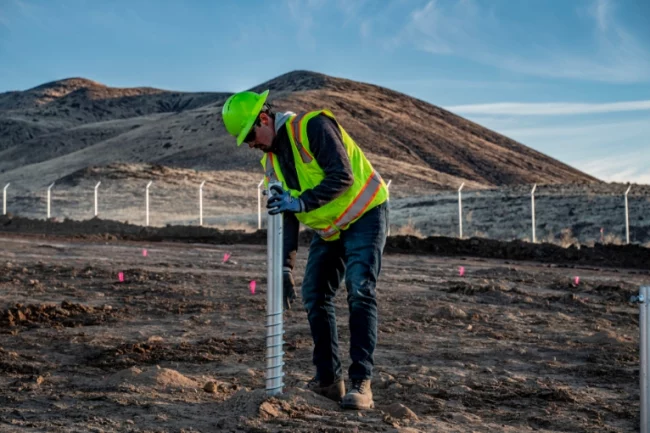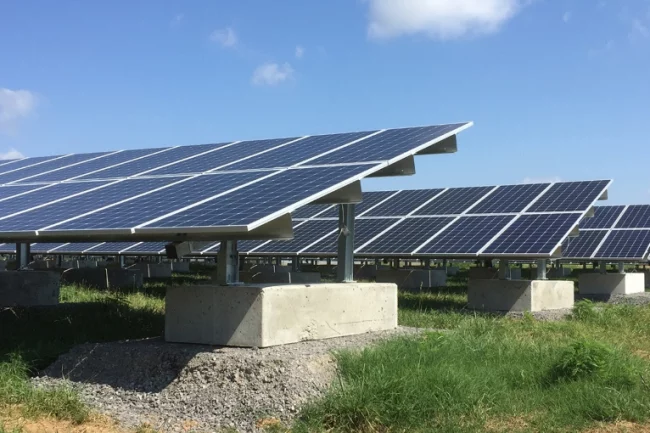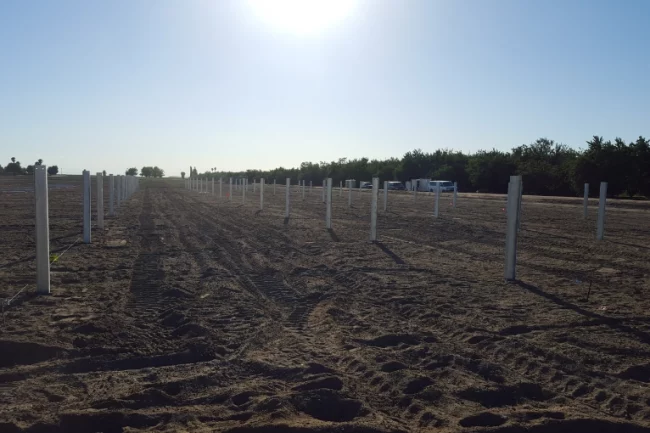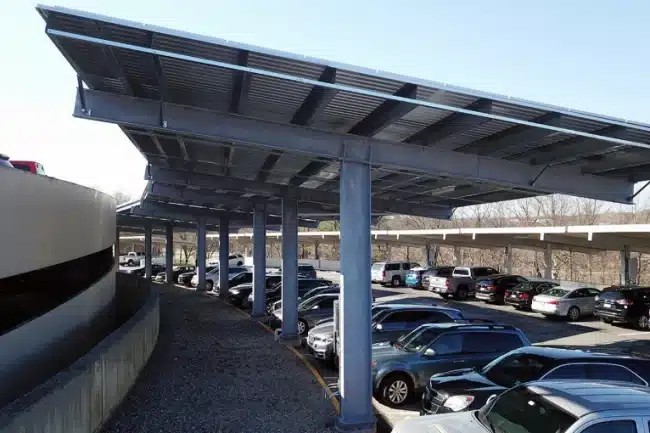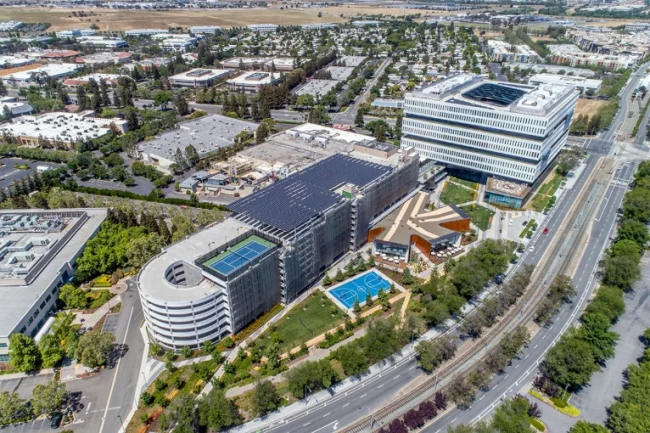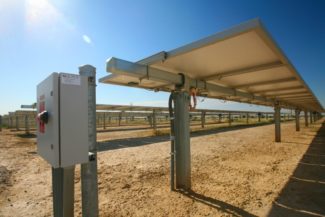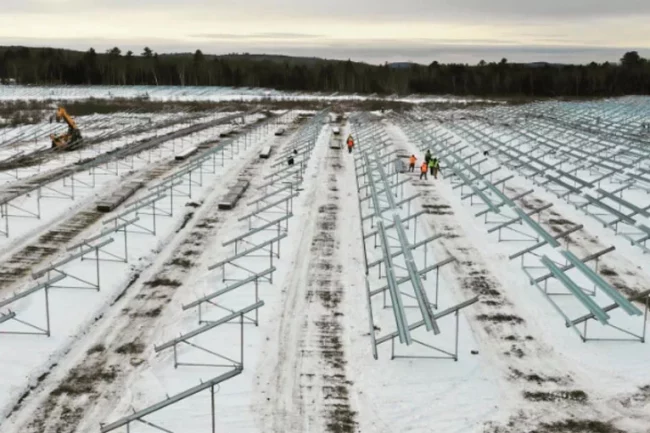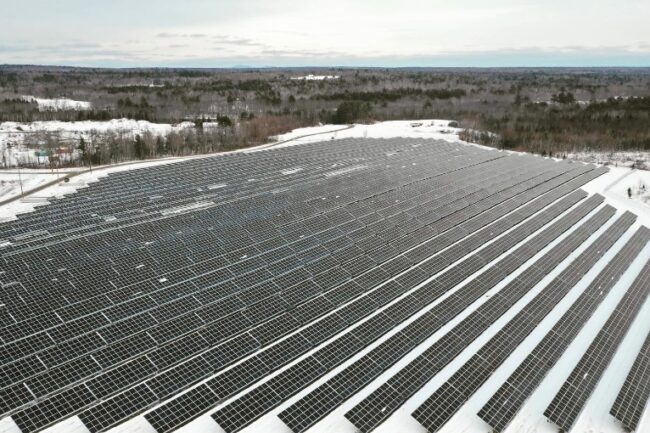Challenging weather conditions are becoming the new normal for solar developers and asset owners, requiring new measures to manage risks and ensure returns.
Understanding the importance of wind testing and how different types of wind forces impact tracker design and production can aid power producers in securing the right single-axis tracker technology for their site and region.
A variety of elements impact how wind affects solar trackers on each individual site, ranging from local weather phenomenon and topography to the influence of other nearby structures or objects. Because no two PV sites are the same, each demands site-specific customizations, which adds complexity to designing these projects.
If wind profiles aren’t properly accounted for in a tracker’s design, asset owners may face a chain of events, including remedial expenses and downtime as well as lower energy yields, and ultimately falling short of financial targets.
Looking at the technical nuances involved in designing for different types of winds, and understanding how proper tracker testing can influence tracker design features such as stow angles and damping drives the stable aerodynamics for long-term performance.

There’s something in the wind
Careful assessment of a site’s wind conditions makes it possible to ask the right questions from the start.
Variability in wind speed, turbulence and direction all can have unexpected effects on solar trackers and their surrounding environment. Understanding wind effects helps developers and EPCs account for uncertainties and optimize yield.
Wind effects can be classified into three main categories: static, dynamic, and aeroelastic.
- Static wind forces exert steady and constant pressure on a tracker, which can cause deflection or bending of the structure that affects the performance and accuracy of the tracking mechanism.
- Dynamic wind forces are less predictable, fluctuating in speed and direction, which can cause significant vibrations and stress on a tracker, reducing tracking accuracy and causing panel misalignment as well as component wear and tear. Advanced aerodynamic models that consider turbulence, gusts and other variations should be used to account for these dynamic wind loads.
- Aeroelastic wind forces occur when a tracker interacts with surrounding airflow. Among the aeroelastic effects are resonant vibration, torsional flutter and torsional galloping, all of which can cause uncontrolled vibrations or oscillations, leading to misalignment, reduced tracking accuracy or component failure. Tracker design must focus on countering these effects to achieve aerodynamic stability.
Tracker design must focus on countering these effects to achieve aerodynamic stability, according to Canadian engineering firm RWDI, which specializes in wind testing. Each component in a tracker’s structure must be assessed to ensure optimized resistance to wind loads. A number of potential failures need to be taken into account, including:
- Resonant vibration, which occurs when the frequency of a wind gust matches the structure’s natural frequency, potentially causing catastrophic failure.
- Torsional flutter, which is a self-excited aerodynamic instability that can cause large amplitudes in the array’s torsional motion, leading to tracker failure.
- Torsional galloping, which uniquely includes vertical motion. Tracker failure occurs when high wind speeds overcome the structure’s resistance.
Not only is understanding wind effects critical to equipment design, but knowing how to weather wind gusts can also optimize a tracker’s performance. Knowing about anomalous wind on a specific portion of a PV site, for example, means that a wind fence could be used to reduce wind speed and turbulence, improving tracker stability and accuracy. Sophisticated sensors could be deployed to detect wind variations and adjust a tracker’s position to optimize energy production. It’s also possible to reduce a tracker’s profile, increase its rigidity or design it with specific materials that resist wind loads and aeroelastic effects.
Knocking the wind out of tracker design with testing
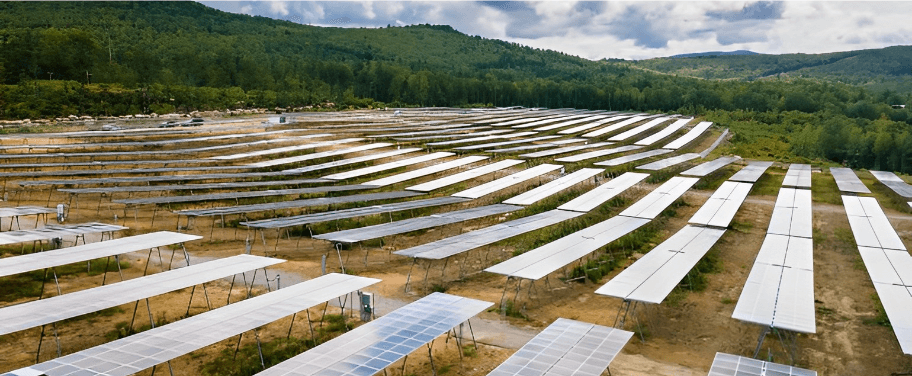
Stow angle and associated static and dynamic wind loads must be carefully considered when designing a wind-resilient solar tracker. A useful mitigation strategy is damping, which dissipates or controls vibrational energy or oscillations in a system.
Dampers are a key part of developing an optimal stow strategy, especially for solar trackers at 0° stow, which are susceptible to torsional forces that cause twisting and spinning motions along the axis of a torque tube. During development of a wind-resilient 1P tracker, different tilt angles were tested in a wind tunnel to develop an optimal stow strategy. The testing demonstrated that lower tilt angles provided fewer static loads on the structure and less force on the system overall. A 0° tilt angle provided the lowest coefficient value, as the lateral load was close to zero.
Higher tilt angles placed additional stresses on the structure, requiring more foundations or increased foundation and torque tube sizes to withstand additional lateral forces. By contrast, a 0° stow strategy implemented with the right degree of overdamping and stiffness to resist deformation was found to require fewer foundations.
The ideal design for a 0° stow should balance stiffness, damping and weight to control tracker costs, protect assets and maintain efficiency. While stowing at high-tilt angles can be safe, it may lead to increased wind loads on foundations and other parts of the structure, requiring stiffer systems or overdamped designs to mitigate dynamic fluctuations that cause aerodynamic instability.
Battening down the hatches with damping
Proper damping — which restrains vibrations and oscillations — is crucial for ensuring a solar tracker system’s stability. Determining the right amount and type of damping depends on a variety of factors, such as the design’s stow angle, wing length and the structure’s mass.
Again, testing is key here. A system that is underdamped can become unstable, requiring costly mitigations such as supplemental dampers to address torsional forces that might otherwise cause tracker damage or even failure.
For the 1P solar tracker discussed in the previous section, which had a 0° stow strategy and a 30- to 40-m wing length, it was found that two to four dampers per row were sufficient to create a properly damped structure.
Because quality testing is essential to determine the right configuration, be sure to choose an experienced tracker solution provider with damper expertise that can meet project specifications, budget and timelines.
Knocking the wind out of instability with multi-row testing
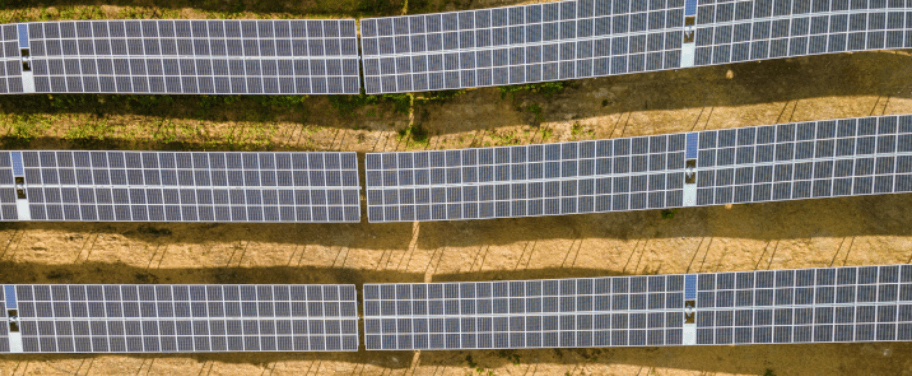
Testing a tracker design can’t be done in isolation. It is essential to conduct multi-row testing to balance stiffness and damping to maximize performance and mitigate long-term risks. Positioning, shielding and wind vortices all can affect the aeroelastic performance of different segments of a solar array in various ways.
Multi-row testing rotates the table to simulate wind testing from multiple angles to determine the impact of static and dynamic wind on a system’s perimeter and central rows. Pressure taps can determine peak static and dynamic wind loads to provide coefficient values needed to design optimized 0° stow angles. The values also help determine the ideal number of foundations and the most cost-effective array height.
While a 0° stow angle was ideal for the example 1P tracker, with all rows behaving the same way as wind blew over the panels at stow, the perimeter zones received higher loads in a pre-stow position before impacting the central zones downwind. It is important to verify aeroelastic effects to maintain efficiency, avoid mechanical wear and tear, reduce downtime and lower efficiency. Testing multiple rows enhances a system’s overall design and allows strategy adjustments to ensure that perimeter zones don’t negatively affect the array’s central rows.
It is important to verify aeroelastic effects to maintain efficiency, avoid mechanical wear and tear, reduce downtime and lower efficiency. Testing multiple rows enhances a system’s overall design and allows strategy adjustments to ensure that perimeter zones don’t negatively affect the array’s central rows.
Plucking the wind out of a system’s sails
Pluck testing — pulling and releasing a tracker to simulate a gust of wind and evaluate its dynamic behavior — validates a tracker’s stiffness and damping ratio. The process also includes high- and low-amplitude tests and a shake test. Results are compared to aeroelastic wind testing outcomes to balance the design.
It is essential to incorporate the indicated angles of rotation into pluck test calculations to predict potential rotations of up to 15° accurately. pluck test that accounts for lower angles may be easier to simulate, but it could throw off accuracy.
Proper pluck testing ensures that a tracker will perform as expected in real-world wind conditions, preventing costly downtime. Choose a tracker solution provider with ample pluck testing expertise and an experienced engineering team capable of validating existing aeroelastic wind reports.
Go like the wind with the right racking partner
When evaluating tracking technologies, consider manufacturers with extensive wind tunnel testing that can provide robust data to support these questions:
Has the tracker manufacturer conducted comprehensive multi-row static, dynamic and aeroelastic wind tunnel tests in recent years? Can they prove that their tracker design complies with the tolerances specified in these tests?
Can they demonstrate that their design meets the tolerances specified in these tests, including natural frequency, damping, array height, chord length, tracker length and GCR?
What is the critical wind-speed the system can withstand during normal operation and stowage? Are specific calculations demonstrating how these speeds are calculated using data from the aeroelastic wind report?
Can the tracker manufacturer provide evidence that their design accounts for all specified pressures and wind tunnel-specific load combinations beyond standard building code requirements?
If the tracker manufacturer’s design does not utilize dampers, can they verify that their tracker will not experience adverse aeroelastic effects during normal operation and stowage?

Chase Anderson
Chase Anderson joined Terrasmart in 2012 as part of the engineering field support team where he regularly visited project sites across the Northeast. Since then, he has been pivotal in advancing Terrasmart’s research and testing on wind and snow load analysis. As an integrated racking, installation, eBOS, and software company, Terrasmart has installed 20 GW of solar capacity across 4,900 projects on some of the toughest sites in the country.

